 aNewDomain commentary — Nearly three weeks ago, The Los Angeles Times fired me as its editorial cartoonist at the request of powerful local interests. That request came from the Los Angeles Police Department (LAPD), which provided a 14-year-old audiotape to make their case that I ought to be dismissed for lying about the circumstances of my 2001 arrest for jaywalking.
aNewDomain commentary — Nearly three weeks ago, The Los Angeles Times fired me as its editorial cartoonist at the request of powerful local interests. That request came from the Los Angeles Police Department (LAPD), which provided a 14-year-old audiotape to make their case that I ought to be dismissed for lying about the circumstances of my 2001 arrest for jaywalking.
The tape turned out to be shady: unauthenticated, unintelligible, probably spliced/edited, and possibly partially erased. Fortunately for me, audio enhancement un-erased it — and cleared my name among those who took the time to listen to it.
Despite this turn of events, editorial page editor Nick Goldberg refused to reconsider his decision, or to issue a retraction. He even refuses to talk to me! Clearly the newspaper’s close financial and political ties to the LAPD and its police union, the Los Angeles Police Protective League (LAPPL), make it impossible for them to walk back one of the most extreme examples of defamation by a major newspaper anyone can remember.
 Pretty shabby.
Pretty shabby.
Interestingly, The Los Angeles Times hasn’t always been so unsupportive of cartoonists. Here are a few examples of the paper in the City of Angels being on the side of the angels:
The LA Times‘ defense of Paul Conrad
In 1968, Los Angeles Mayor Sam Yorty filed a $2 million libel lawsuit against Los Angeles Times editorial cartoonist Paul Conrad. In today’s brave new world of accommodationist journalism, the paper might have kicked Conrad to the curb for causing trouble with the local political establishment.
Times publisher Otis Chandler not only kept Conrad on staff, he shelled out big bucks for Conrad’s legal defense.
It wasn’t Conrad’s last brush with power.
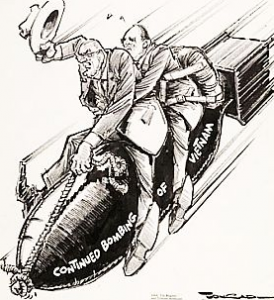 Another Conrad cartoon, criticizing Union Oil Co. President Fred Hartley for exporting oil to Guam during the 1974 energy crisis, prompted another libel suit.
Another Conrad cartoon, criticizing Union Oil Co. President Fred Hartley for exporting oil to Guam during the 1974 energy crisis, prompted another libel suit.
Again, Chandler ordered Times lawyers to defend Conrad.
Conrad won both cases. Why? Well, the First Amendment. Obviously.
“The courtroom victory only enhanced the image within The Times of Conrad as a towering, practically invulnerable figure,” The Times wrote in Conrad’s 2010 obituary.
The paper bragged about how supportive it was of their cartoonist, known for hard-hitting work. “In the 30 years between his hiring and his 1993 retirement, his bosses killed only a handful of Conrad’s cartoons.”
The LA Times and Charlie Hebdo
On January 7, 2015, heavily armed gunmen stormed the offices of the Paris satirical weekly Charlie Hebdo, killing 12 people and wounding others. Not everyone defended the dead and dying cartoonists. They’d drawn cartoons plainly aimed at offending religious people. This made people uncomfortable, even liberal cartoonists like “Doonesbury” creator Garry Trudeau. (Interestingly, The Times refused to run Trudeau’s legendary “Inside Reagan’s Brain” series of 1986.)
Not the LA Times.
 In an editorial titled “Paris terrorists aimed at freedom of expression, we must defend it,” The Los Angeles Times wrote: “Freedom of expression includes the right to criticize and, yes, ridicule the cherished beliefs of others.”
In an editorial titled “Paris terrorists aimed at freedom of expression, we must defend it,” The Los Angeles Times wrote: “Freedom of expression includes the right to criticize and, yes, ridicule the cherished beliefs of others.”
The editors went on to defend the cartoonists’ right to risk offending people’s religious sensibilities.
“In a free society, the answer to offensive speech about any topic is more speech, not legal reprisals and certainly not violence or vengeance.”
Also, The Times commissioned — um, this is awkward — then-editorial cartoonist Ted Rall to write an essay remembering “Charlie Hebdo’s martyrs for free speech.”
Anti-Muslim cartoon contest in Texas
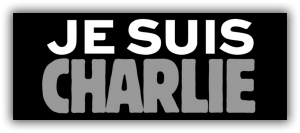
On May 6, 2015, two ISIS-inspired gunmen were shot when they appeared at the site of an Islamophobic cartoon contest sponsored by Pamela Geller in Garland, Texas. The gunmen had an evident aim of massacring the cartoonists and other attendees.
As with Charlie Hebdo, the cartoons involved were intended to provoke an angry reaction from Muslims. Nevertheless, The Times came down firmly on the side of free expression, no matter what.
“If free speech is provocative, should there be limits?” the editorial board, headed by editorial page editor Nick Goldberg, wondered aloud, adding:
The short answer is no — beyond the narrow exceptions the Supreme Court has acknowledged in its interpretations of the 1st Amendment. Those exceptions include face-to-face ‘fighting words’ likely to be interpreted as ‘an invitation to exchange fisticuffs’ and statements ‘directed to inciting or producing imminent lawless action and [are] likely to incite or produce such action.’”
As The Times’ editors noted in these cases, a commitment to free speech requires standing by cartoonists even — especially — when they produce work that offends people.
Except, apparently, the LAPD.
For aNewDomain, I’m Ted Rall.
Paul Conrad cartoon on Vietnam War, in The Los Angeles Times: PopHistory.Dig; All Rights Reserved; Paul Conrad at his desk in the 1970s at The Los Angeles Times: PopHistory.Dig; All Rights Reserved; Paul Conrad 1968 cartoon on LA Mayor: DemocraticUnderground.com, All Rights Reserved.

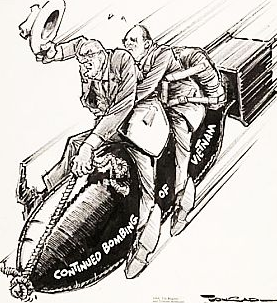




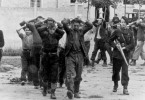


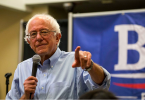
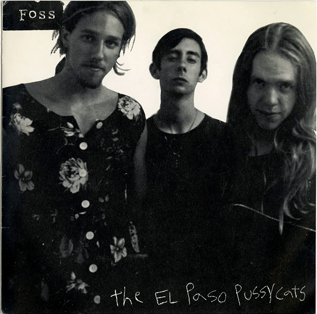

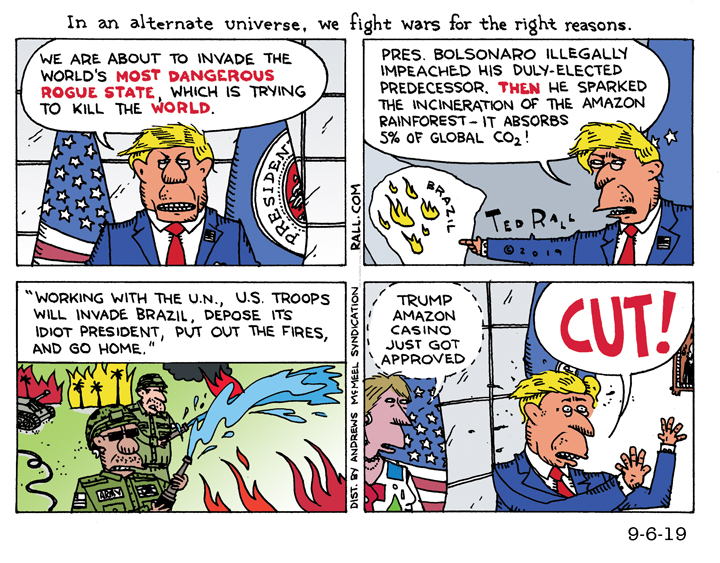

The hypocrisy is vomit-provoking.
Ted Rall attempts here to give the reader the impression that the audio tape in question was the only piece of evidence that contributed to the decision to fire him. That is not the case. Read the LA Times Reader’s Note on this situation and decide for yourself who is wrong.
Yeah. However, the LA Times note has its audio experts saying they “can’t hear” the women halfway through yelling for the cop “to take off the handcuffs.” I can hear that clearly. Can’t you? Maybe constant headphone use is making them deaf!